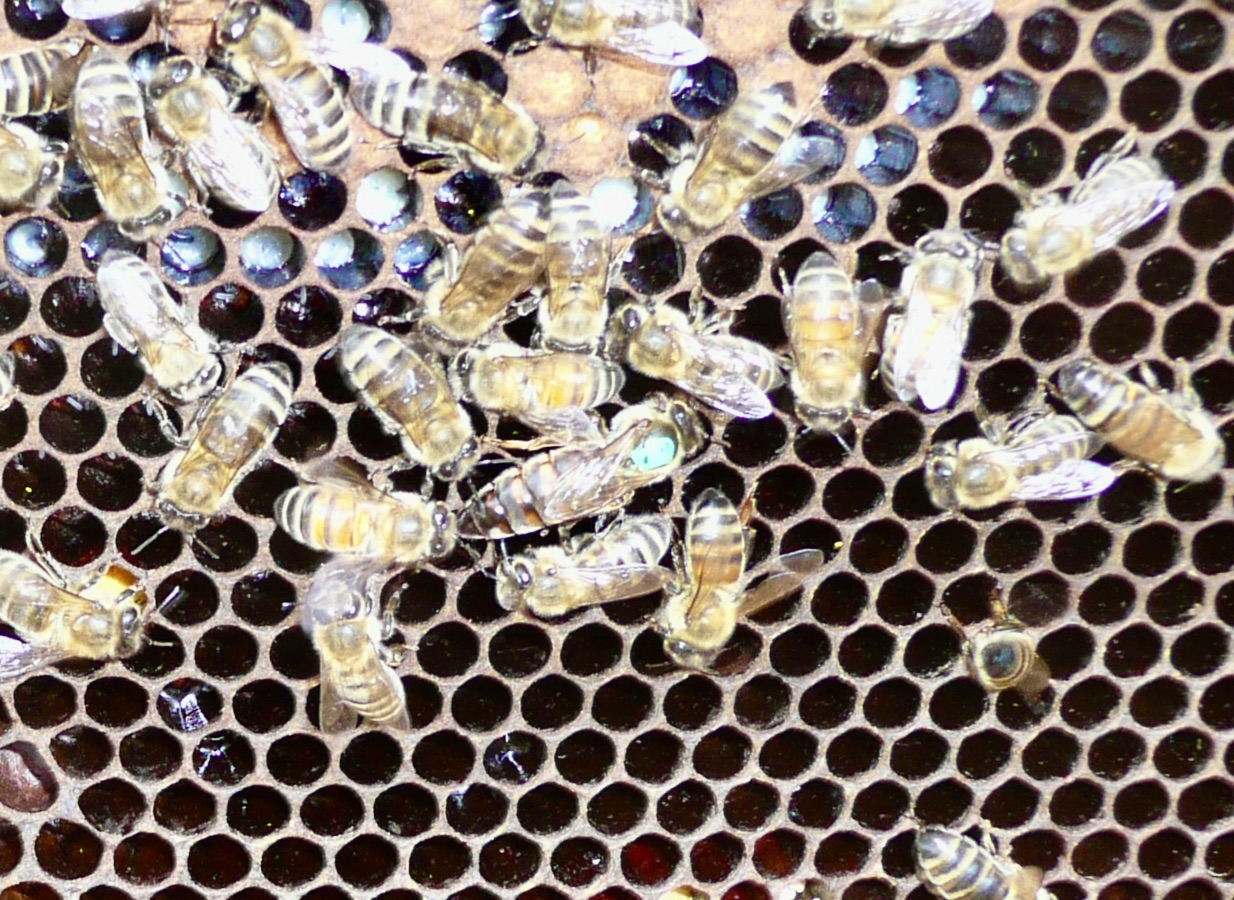Bee Blog - May 2020
This month's update from local beekeeper Gerald Bushby
One of the few advantages of being confined to home during the current pandemic is having time to read magazine articles and books on things that interest you. In my case; bees.
I recently came across two interesting articles in magazines relating to bees.
I am often asked how long have bees been around for. The current answer seems to be a very long time. A report in the Journal PLOS One informs us that the oldest know fossil evidence of bees has recently been found in Patagonia, Argentina. Burrows made by the sweat bee, Cellicalichnus Krausei, have been found in volcanic ash dating back one hundred million years, several million years earlier than previous discoveries.
Another question I am ofter asked is how long have bees had to live with parasites similar to the varroa mite. Again the answer to this is also a very long time. A report in the Journal BioOne describes work by the Oregon State University on finding a bee preserved in amber (a la Jurassic Park) discovered in Myanmar showing a bee with pollen and a parasite beetle thought to date to at lease 65 million years ago.
Meanwhile back at my Apiary things are still progressing well. The bees are loving the warm spring weather. My photograph this month is of one of the green queens on a comb surrounded by workers. If you look closely at the cells to the top of the photograph the white colour in the cells are developing larvae being fed by the workers. The biscuit coloured capped cells, again at the top of the photograph, contain the fully developed lava which have been capped with wax from which will soon emerge fully formed worker bees.
My thinking at the beginning of the month was that my spring honey might be in short supply this year. Most of my bees spring honey in previous years had been derived from the flowering oil seed rape plant which the bees love. For some reason however, the farmers around my village seem to have decided not to plant oil seed rape this year. It is said that bees will fly as far as three miles from their hives to collect pollen and nectar. As part of my daily exercise I have been circling my village on the footpath network looking for oil seed rape fields within a three mile radius (luckily I don’t live in the Irish Republic where the exercise restriction is a one kilometre radius of your home or Spain and Italy where the restrictions are even tighter). I had almost completed my “beating the bounds” trip around my village when I came across just one field of oil seed rape just about three miles away.
In the last few weeks the hives have been very active. Lots of flying bees and flying most days from early until late taking advantage of the very fine weather. Last weekend I carried out another inspection of the hives and was pleasantly surprised to find that all three hives have been laying down lots of honey in the supers that I had added in the last inspection two weeks earlier. In one hive the super was 2/3rds full, very advanced for this time of year. I added another super to this hive to make sure they have enough room.
Have the bees found the oil seed rape, is it within their range? The reason I would like to know is that nectar from oil seed rape turns into set honey and if I do not isolate it, it would turn all of my honey into set honey which I do not want. I had thought that if there was no possibility of the bees visiting oil seed rape plants this year I could harvest the honey in one session in August. I suspect now that I will have to wait until the oil seed rape, just about within their flight range, has finished flowering at the end of May and then collect the honey to see if it sets and then carry out a second harvest in August for the summer honey. Just like last year.
